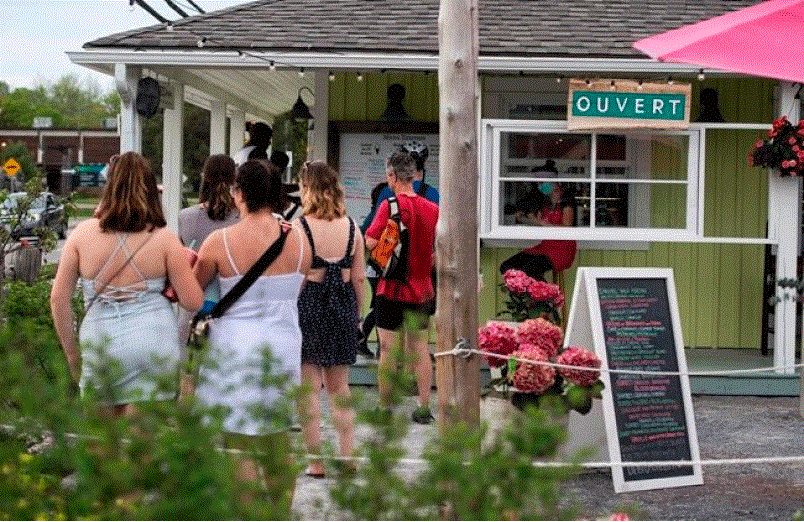Ottawa is earmarking millions of dollars to promote holiday travel inside Canada as it seeks to help the tourism industry weather the COVID-19 pandemic.
The funds announced by Economic Development Minister Melanie Joly on Sunday includes $30 million originally earmarked for attracting foreign visitors through the federal tourism marketing agency, Destination Canada.
The money will instead be used to help provinces and territories encourage Canadians to discover their "own backyard" as the country's international borders remain largely closed due to COVID-19.
The government is also setting aside around $40 million so tourism agencies in southern and northern Ontario as well as western Canada can adapt their operations to the pandemic, particularly as what would normally be the busy summer season approaches.
"A lot of people who have lost their jobs are in the tourism sector right now and the entire idea right now is to save the summer, but to save the summer differently," Joly told The Canadian Press in an interview.
"There's an entire movement across the country to shop locally. We see that people want to discover or support even more their local businesses. ... Well I would add to that a new movement: visit local. And rediscover your beautiful city and your region."
Talks around supporting the tourism industries in Quebec and Atlantic Canada are underway, she added.
The tourism industry, which employs about one in 11 Canadians, has been hit hard by the pandemic as international travel bans and border restrictions have choked off the flow of visitors to Canada.
A report by Destination Canada in April suggested the sector could see total tourism spending decline by about a third from 2019 levels and result in the loss of about 263,000 jobs, many of them associated with small- and medium-sized companies.
Joly pointed to the federal government's wage subsidy, rent assistance and other emergency COVID-19 measures as having helped the tourism sector, but said additional efforts are needed as the summer approaches and provinces start to re-open.
Yet the new funds come as Canadians are still being told to stay at home as much as possible to prevent the spread of COVID-19. Some provinces are starting to ease back on restrictions around movement, but fears of a second wave are ever present.
"Obviously people are trying to find the right balance between having a tourism sector that can survive and at the same time making sure that we don't continue the spread of the virus," Joly said when asked about promoting travel during a pandemic.
"And to do that we need to abide by the public-health authorities' advice and at the same time support the tourism sector and find new ways for them to be able to have revenue. So that's what we're doing."
Leaders from across Canada's tourism industry announced the creation of a new roundtable last week while calling for talks with the government around the easing of travel restrictions and mandatory quarantines to prevent long-term damage to the sector.
In a letter to Prime Minister Justin Trudeau, the roundtable members noted the European Union and Australia had already started taking steps to prepare for the critical summer tourism season.
"We propose to work closely with the federal government to responsibly take the necessary steps, including additional bio-security measures if appropriate, to ensure that the upcoming summer travel season is not entirely lost," the letter reads.
"The highly restrictive measures in place today are not sustainable. Like the government, we want to avoid a second wave of the virus and are certain reasonable measures can be taken to help mitigate risk."
Joly was more circumspect when asked about easing travel restrictions, saying the timing would depend on when adequate mass testing and contact tracing can be established as well as the provision of personal protective equipment.
"I had a conversation with the ministers of tourism of the G20 a month ago," she said.
"We all agreed that for a while we will be supporting local tourism and eventually regional tourism, and then eventually national tourism and then eventually international tourism. So that's not only happening here in Canada, it's happening in all of the world."
This report by The Canadian Press was first published May 31, 2020.




